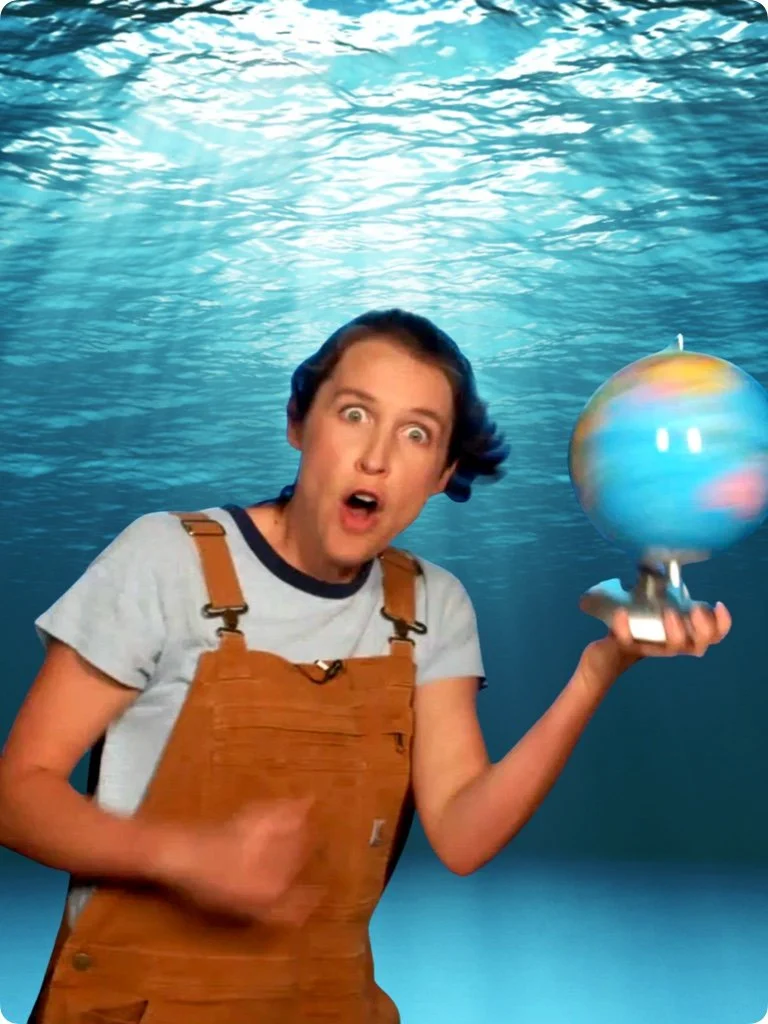Ask Tappity: Science Questions for Kids > How Much Water is in the Oceans?
How Much Water is in the Oceans?
All the Earth’s oceans contain lots and lots of water - but just how much is there? Watch this video to find out, or read our explanation below!
How Many Bathtubs Would the Ocean Fill Up?
Imagine you took all the water in all of Earth’s oceans, and used it to fill up as many bathtubs as you could, and then put all those bathtubs in a line. That line of bathtubs would be long enough to go from the Earth to the Moon and back FIVE times. That’s a lot of water!
There’s 100 Times More Space in the Ocean Than on Land
We tend to think of the land as pretty big, but compared to the ocean, it’s tiny. The Earth’s biosphere is all of the parts of the Earth where things can live: the land, the ocean, and the air. The land makes up just 1% of the Earth’s biosphere - so there’s about 100 times as much space in the ocean as there is on land.
Ocean Facts for Kids
Got ocean questions? We’ve got ocean answers!
-
If you want to put a number on it, scientists estimate there’s about 321,003,271 cubic miles of ocean water.
-
The ocean actually gets most of its salt from rivers, which wash away tiny amounts of salt from river beds as they run towards the sea. So, does that mean the ocean is getting saltier? No - because the ocean is also constantly losing salt to sea spray, making salty deposits like salt flats, and other ways.
-
The waves you play in at the beach aren’t caused by the Moon, as many people believe. They’re actually caused by wind. Wind blowing over the ocean’s surface for miles and miles can eventually ruffle it enough to push it. That pushed water pushes other water, which pushes other water - in other words, a wave. That wave of energy travels until it’s interrupted, usually by land, which means that the waves you’re swimming in may have originated on the other side of the world.
-
The bottom of the ocean is a little over 2 miles (3.6 km), for the majority of the ocean. It slopes downward as you get farther out from land before bottoming out. However, there are deep trenches in the ocean floor which can go down much farther. The deepest of these trenches yet discovered is the Marianas Trench, located near the island of Guam, and the deepest part of the Marianas Trench is the Challenger Deep, which is nearly 7 miles deep - so deep, that if you put Mt. Everest at the bottom, the summit would still be over a mile underneath the surface.
-
The Siphonophore might be the longest creature ever seen. Scientists found one that was 150 feet (46 m) long - half the length of a football field! These strange creatures live deep under the surface, and are as thin as a broomstick. They emit a beautiful, eerie glow, like fireflies, and are actually a colony of thousands of teeny tiny creatures called zooids. The second-longest animal is the lion’s mane jellyfish, which has tentacles up to 120 feet (36 m) long.
-
The vast majority of the ocean remains unexplored. Over 80% of the ocean has never been mapped, explored, or even seen by humans. That means there’s lots and lots of unexplored ocean, with creatures left to discover - maybe by you!
-
The ocean floor is mapped primarily by using sonar - bouncing sound waves off the bottom of the ocean and measuring how long they take to come back, to figure out how far away it is. Despite technological advances, we’ve still only mapped about 1/20th of the ocean’s floor. So the deepest part of the ocean, the Challenger Deep, may not actually be the deepest part we’ll ever discover.
-
Even if the polar ice caps melted, the Earth’s oceans still wouldn’t be able to cover all of Earth. If all of the ice were to melt, the sea level would rise about 230 feet - so everything higher than 230 ft would be above water.
-
Scientists have never observed any ways for water to leave the Earth completely. It can cycle through the air, through rivers, into the ground, and even deep underneath the Earth, but the total amount always stays the same.
-
The deepest part of the ocean we’ve discovered so far is the Challenger Deep, located in the Western part of the Pacific Ocean. The Challenger Deep is 10,935 meters, or nearly 7 miles, beneath the surface of the ocean.
More Answers to Ocean Questions from Kids
Why is the ocean so salty? How do fish breathe? The Tappity Oceanography Library has interactive lessons with answers to those questions and more!
Want Even More Science for Kids?
Dive into Tappity, the world’s largest interactive K-5 science library. Find everything from penguins to planets and even protozoa! So whether you’re an early engineer, a budding biologist, or an aspiring astronaut, you'll be sure to discover something new just for you.
























